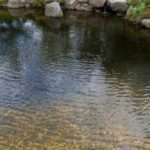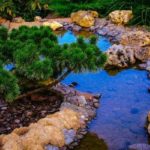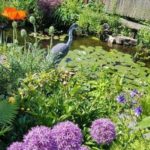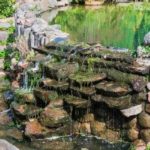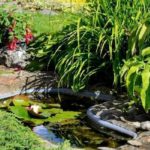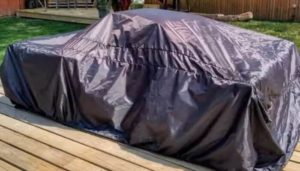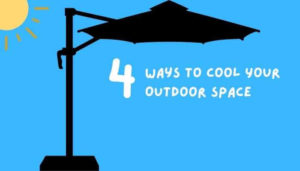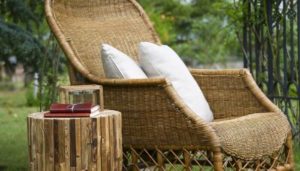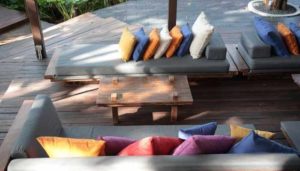If you want to have a thriving garden pond, you need the foundation for that pond first. Before you add the pretty stone, the plants, or the fish, you need to consider these structures and also the mechanics that keep a pond clean and healthy.
What I would consider essential to your pond would not only be the foundational materials like the underlayment, liner, and covered GFCI outlets, but also the pump, filter, and some sort of water agitation system.
If you want me to lay out the basics for having a garden pond, then you can keep reading. I’ll go over the foundational components as well as the other necessities and remind you of things that will probably be good purchases for keeping your pond as nice as you can.
Why should I have a special GFCI outlet installed for my garden pond?
For one thing, it may be state or local law to have a GFCI outlet close to anything with water included or outside. Usually, we keep these things covered as well.
But the point of a GFCI is that it will automatically trip if it gets a power surge or if it gets wet – which prevents fires or shocks. This is all about safety and you really shouldn’t bypass safety at all.
Do you need a liner for a garden pond?
Yes. And you don’t just need a liner. You need a liner to keep the water in the pond. Otherwise, it’ll leak right into the ground! If your pond were as big as an acre, that’s different. But we’re talking garden ponds – small backyard water features. So, yes, you need a liner.
If you don’t grab a preformed liner, you also need underlayment. Why? To keep your liner from punctures and stretching. This part is optional, I’ve not used an underlayment with any pond that I’ve built or had built thus far. But some people swear by them.
Liners can be made of synthetic rubber, usually 45-mil EPDM. This is a thick, durable, flexible, and UV-ray resistant material. You can also use plastic to be the liner, so long as it’s made of polyethylene (PE) 20-mil or reinforced polypropylene (RPP) 36-mil. These are less expensive materials but they can be stiffer.

Did You Know?
Formulas to calculate how much liner material you’ll need.
Liner length = pond length + (2 x depth) + 2.
Liner width = pond width + (2 x depth) + 2.
THEN: You multiply liner length by liner width to get total square footage.
Some people prefer to use the preformed ponds instead of using a liner. And that’s okay, What you may need to be sure about is that these things can often be too shallow for keeping the right temperatures for fish. They also can be so shallow that algae will flourish. But, if you plan on keeping up with the maintenance of it and just want a focal point with some nice water plants, this might be an easier and cheaper route.
Can you have a garden pond without a pump?
Your garden pond’s pump should be circulating your water through a filter and also to other water features that aerate the water, like waterfalls and fountains, or bubblers. So, yes, it’s necessary. Your plants and fish will not be able to live in stagnate water. Also, stagnate water can become stinky due to anaerobic bacteria and it will also become a breeding ground for mosquitos and other pests. So definitely keep a pump running in your pond at all times.
Do you really need a filter for your garden pond?
No – but should you have one? Yes! I don’t care if you make one all on your own around your pond pumping system, please always include a filter for your garden pond. You will not be disappointed.
For one thing, it keeps debris from clogging the pump so easily if you have it around the thing. Also, it cleans the water and you just have to take out your filter regularly to spray it out and then put it back in to clean it more. Do you want clearer water? Definitely add a filter.
What is a water agitator?
There are all kinds of things you can use as a water agitator. It is essentially anything you can use that will keep your water aerated via movement. So fountains, waterfalls, and even bubblers used in aquariums or the bottoms of garden ponds are water agitators.
Since everything in your pond is helped along by keeping your water oxygen-rich, I would consider having something in your pond that agitates water essential.
What other things should I consider purchasing for my garden pond?
The first thing I want to list is something a lot of people forget about – if there are any kids around at all, I would say make sure you place your pond where there is a fence around it. I know, our website is about backyard boosts, so you would assume it’s going in the backyard and that there is most likely a fence involved, but just in case, yes, a fence is a good idea and possibly even required.
I would definitely not even begin leaving the pond overnight without putting barley bales in it somewhere. Ever since we had a horrible break out of green algae, I will always keep these little things somewhere in the water, especially around a fountain or a waterfall so that the water has to pass through the bales.
You may also want to keep safe algae cleaner, water clarifying conditioners, cleaning brushes, and a few other supplies on hand before going all-in on your garden pond. It’s just easier to have these things ready on hand when you need them – and they will be needed after rainy weeks and when summer comes and you need to keep the pond clean, for sure!
You also really should consider the purchase of water plants for your garden pond. Why? Not only are they a lovely addition to the ecosystem because of their beauty, but also because they tend to be heavy oxygenators for your water. You just need to be sure to cull them enough to keep them from covering the entire surface of the water.
Maintenance is a must for garden ponds.
No matter what you put into it in the beginning, never forget that to have a garden pond means you will always need to keep up a maintenance plan for it. This is not one of those build-and-forget-it projects.
Not only do you need to keep those barley bales in your pond to minimize algae growth, but you need to keep a check on algae regularly. You can dissuade its inevitable summer growth by keeping extra clutter from the base of your pond and regularly scrubbing the sides and stones.
Cleaning the pump, water agitation system, and filter regularly is also something that you should see as necessary. Always be sure they are clean and fit to go back into the pond so that your flora and fauna are not bothered much. And speaking of the fauna, you need to be keeping that under check. Too many blooms or leaves falling into the water can cause problems.
As the seasons shift, be sure you are keeping the correct water levels, that the water is properly conditioned before it’s added to the pond, and that it’s the right temperature. The water for your garden pond is the most important part of this ecosystem you’ve built.
Keeping a pond can be a great hobby and a learning experience for kids, but it’s also challenging. Be absolutely sure you are ready for the time and effort you’ll need to put into the maintenance of having this kind of water feature before you sink any money into it.

